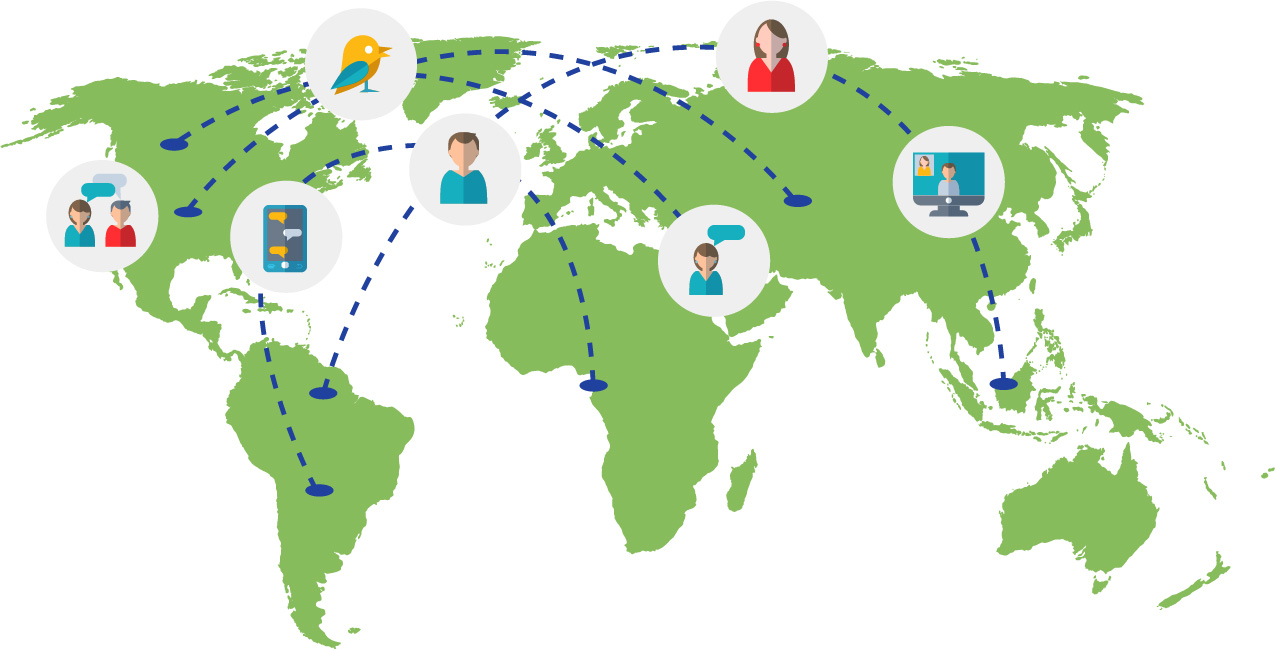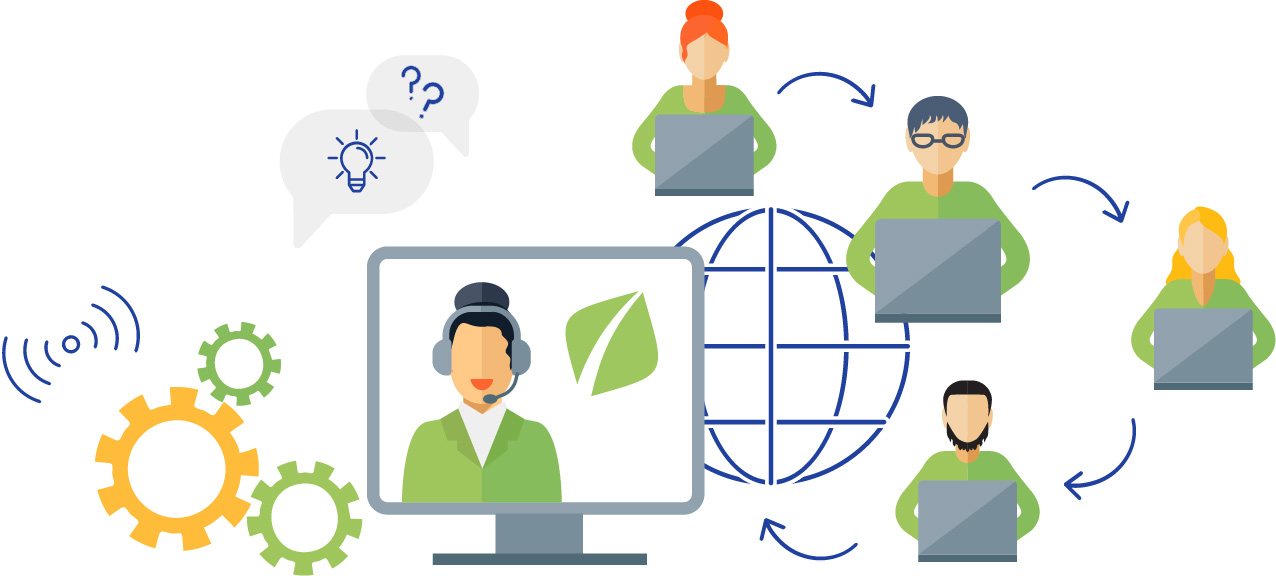The Future of Work: Digitalization and Work Culture

The topic digitalization is diverse, ubiquitous, and difficult to grasp due to its complexity. But one thing is certain: it affects all of us because the digital world has become part of our everyday culture.
1 May is a date steeped in history. In the 19th century, labor unions in various countries like the USA, France, Great Britain, and Germany initiated by their demand for the eight-hour day what became today’s International Workers’ Day. Since then, on 1 May, we have focused our attention on the future of work. In modern work culture, topics such as networking and globalization are becoming increasingly important for us. In this article, we drill down into the changing world of work. We investigate digitalization as a basis for unlimited communication and as an opportunity for the future of one’s own work.
What is Digitalization?
The topic of digitalization is diverse, ubiquitous, and difficult to grasp due to its complexity. Depending on the context in which it is viewed, its meaning changes.
Let’s have a look at the influence of digital media on everyday life: we blog, tweet, post, chat, we skype, we like … we even tinder. We communicate and network in a digital world whose borders are fading continuously. At the same time, we develop our digital personality. Who am I and how would I like to be seen? We not only want to gain visibility but also control what can be seen about us. The presentation of the self across different social media channels is also part of the digitization. And when we’re looking for answers? Google the term “google” when you get a chance. You will see that our digital everyday life has already exerted a significant influence on our language and thinking.
One could now illuminate many other areas of everyday life and will always come across this essence: The digital world has become a part of everyday culture.
But what about the world of work? Is there an influence of digital culture? Well, there’s a clearly recognizable technization. Emails, video conferences, and intranet belong to the working life of many. The Digitalization of work has only just begun.
Digitalization of Work
One of the most striking features of technization is that it enables us to bridge distances: With the help of communication tools, we can overcome spatial as well as temporal boundaries to connect with each other. Due to messaging services you are easily reachable at any time you like – and sometimes don’t. All in all, we are much more flexible today than we were 10 years ago. This development can also be seen in the world of work.

The employees of Inpsyde, for example, work on their desks, in their living room, in the park, in Australia, or in Malta. All Inpsyders can work from where they want. Via communication and organization tools, we act in a virtual office. We discuss, plan and exchange ourselves and are, in a spacial sense, only bound to the Internet. To work remotely offers more freedom and flexibility to the employees and therefore, to Inpsyde.
Of course, we cannot overcome all boundaries. If my Internet connection breaks down, I lose the ability to communicate with the team. Therefore, we are dependent on working communication channels. In addition, it is not enough to simply use facilities for communication and organization across the company – we need to make the best possible use of them! A brief example:
New forms of communication in the process of digitization
Usually, when writing a message by using a messenger service, you try to be brief. This is because the focus here is on fast and effective communication in real-time. If you draw up an email, on the other hand, fast communication plays a less important role. It’s more about providing information to another person through an easy and reliable way in a decent time. One usually takes time for a salutation and a greeting at the end. We observe the proprieties. Now, if I formulate a message via a messenger like Slack in the same way as an email, I would slow down the process of communication. In doing so, I’d counteract the actual purpose of the messenger – fast communication. This is why we adapt our way of communication depending on the channel and its purpose.
The standards of such forms of communication become established processually and evolve dynamically. New technologies shape everyday communication and vice versa. Hashtags, smileys, and acronyms like “AFK” are just a few of many examples regarding the development of new forms of communication in the course of digitization.

Digitalization goes beyond technization
Let’s get back to the question of what digitization is: Speaking of digitization and thereby only referring to technization, which means the development and usage of new technologies, is thought too one-sided. Digitization includes also the integration of new technology in various fields of everyday culture. With regard to work-life, the main thing is to digitalize the own way of working. This means that certain working processes have to be newly developed and adapted consistently in coordination with the used technology. The relationship of the individual person to technology plays a major role in this process. Everyone has different preferences, ways of working and thinking. Nowadays, there are more possibilities to customize working tools like browsers and programs for the own use than ever before. We can benefit from this by asking ourselves the following questions:
- Which of the available technologies can help me to facilitate my work?
- How can I adjust certain tools so that they are optimally adapted to my work process?
- How can I design and structure my work environment and work processes in accordance with my individual needs?
In the course of digitization, the world of work is going through changes which has an impact on our working methods, our thinking, our culture, and our opportunities. However, we have the possibility to influence this development. Each one of us can contribute to establishing efficient standards, principles, and views which will help to shape the future of work. Therefore, we should treat this topic with care and be aware of our responsibility. This also includes a lively exchange of opinions, so that no perspective on the subject will be overheard. No matter if you comment, post or tweet: Share your opinion on this topic! The future of work lies in our hands.
Do you want to join the work of the future?
We are looking for new employees! At Inpsyde, you work 100% remotely on forward-looking projects around WordPress.
* Header: The image we used for the header was designed by fullvector / Freepik
* First picture: The first picture we used in the article was designed by macrovector / Freepik
* Second picture: The second picture we used in the article was designed by macrovector_official / Freepik